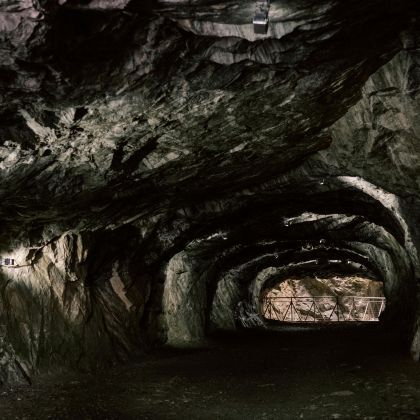Bi • Atomic Number 83

Bismuth
Bismuth is hard, brittle, coarse-crystalline, and shiny with a reddish sheen. It occurs in the Earth's crust about as frequently as silver. It is characterized by diamagnetism and its density anomaly: when solidifying, bismuth expands by about 3,3 percent. After mercury, it has the lowest thermal conductivity among metals, and its electrical conductivity is very poor. Among heavy metals, it has the lowest toxicity. However, bismuth powder can pose an explosion risk under certain conditions.
Bismuth is mainly used in pharmaceuticals, cosmetics, alloys, and the chemical industry and is employed in a number of niche applications.
Important producing countries are China, Laos, Vietnam, and Japan.
The largest active bismuth mine is the Shizhuyuan Polymetallic Mine in the Chinese province of Hunan, operated by Hunan Nonferrous Metals.
Bismuth is a critical raw material for the EU, Japan, and South Korea, while the USA classifies the element as strategic.
Bismuth has been known since very early times because it occurs both in native form and in compounds. However, it was long not clearly recognized as a distinct metal and was often confused with lead, antimony, and tin.
It is suspected that long before its official discovery, bismuth was used in mines as a pigment for silver-colored writings and miniature paintings. For this purpose, bismuth was smelted from bismite or bismuth ochre. In the 14th century, it was discovered in elemental form in the Saxon Ore Mountains.
By the mid-15th century, bismuth gained importance as an alloying component for printing types. Adding bismuth both lowers the melting point and makes the printing types harder and more resistant to wear.
Bismuth was recognized as a distinct element after the mid-18th century by the chemists Claude François Geoffroy and Johann Heinrich Pott.
The largest application areas for bismuth are found in the metal industry, pharmaceuticals (especially as Pepto-Bismol), cosmetics, and the chemical industry. Due to its antiseptic properties, it is used in burn ointments. In eyeshadows, lipsticks, and nail polishes, it provides a pearlescent shimmer.
Metallic bismuth is mainly used in alloys, to which it imparts special properties such as a low melting point and expansion upon solidification. Bismuth is therefore a useful component of type metal alloys, which produce clean castings. It is also an important component in low-melting alloys. These so-called fusible alloys are used in fire detectors and sprinkler systems.
A bismuth-manganese alloy has proven effective as a permanent magnet.
In solders, ammunition, fishing weights, and radiation shielding, bismuth is increasingly used as a lead substitute due to its non-toxicity.
Another emerging market could result from the development of new classes of semiconductors, thermoelectric materials, and topological insulators. Furthermore, bismuth could be relevant for the advancement of quantum computers.
Around 18.000 tons of bismuth are produced globally each year, with most of it coming from China, which holds about an 80 percent market share. Other mining and production countries include Laos, South Korea, Vietnam, and Japan.
Native bismuth is rare in nature. The most common bismuth-containing ores are bismuthinite (bismuth glance), bismite (bismuth ochre), and wismutite.
Bismuth deposits are often associated with lead, zinc, tin, and silver ores. It is found, for example, in tungsten ores in South Korea, lead ores in Mexico, copper ores in Bolivia, and both lead and copper ores in Japan.
Since the beginning of the 21st century, China has taken a leading role worldwide in both the mining and refining of bismuth.
Commercial bismuth is mostly obtained as a by-product during the smelting and refining of lead, tin, copper, silver, and gold ores.
The largest active mine producing bismuth is the Shizhuyuan Polymetallic Mine in the Chinese province of Hunan, operated by Hunan Nonferrous Metals. Bismuth is mainly obtained as a by-product during tungsten processing.
Other significant producers include Zhuzhou Keneng New Material, Hunan Jinwang Bismuth Industrial, Yunnan Tin Group (YTC) in China; Met-Mex Peñoles in Mexico; Masan High-Tech Materials in Vietnam; 5N Plus in Canada; Belmont Metals in the USA; Comibol in Bolivia; and Korea Zinc in South Korea.
In fusible alloys, bismuth can be replaced by the much more expensive indium or gallium. Cheaper tin-lead alloys are also an option, but their toxicity must be taken into account.
In radiation shielding, it can be substituted by tungsten, lead, or depleted uranium.
Instead of Pepto-Bismol, aluminum/magnesium hydroxide (antacids) or proton pump inhibitors (PPIs) can be used in pharmaceuticals.
In cosmetic products, the pearlescent effect can be achieved using mica-based pigments instead of bismuth oxychloride.
In fishing weights, bismuth can be replaced with steel, tin, or the more expensive tungsten.
Critical and Strategic Metals

